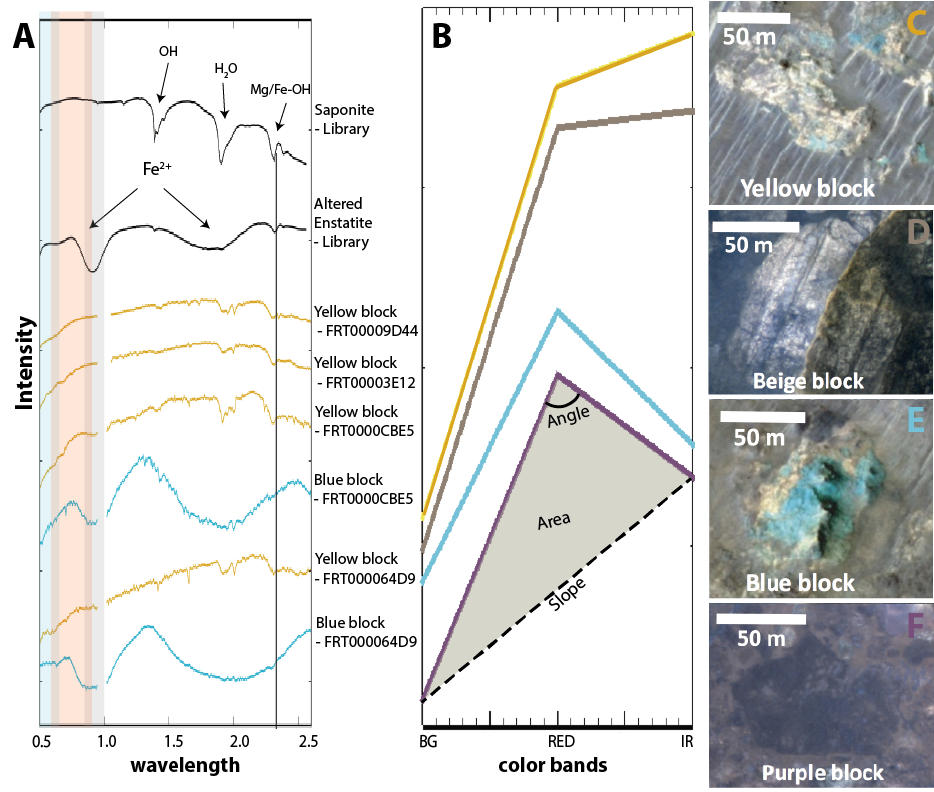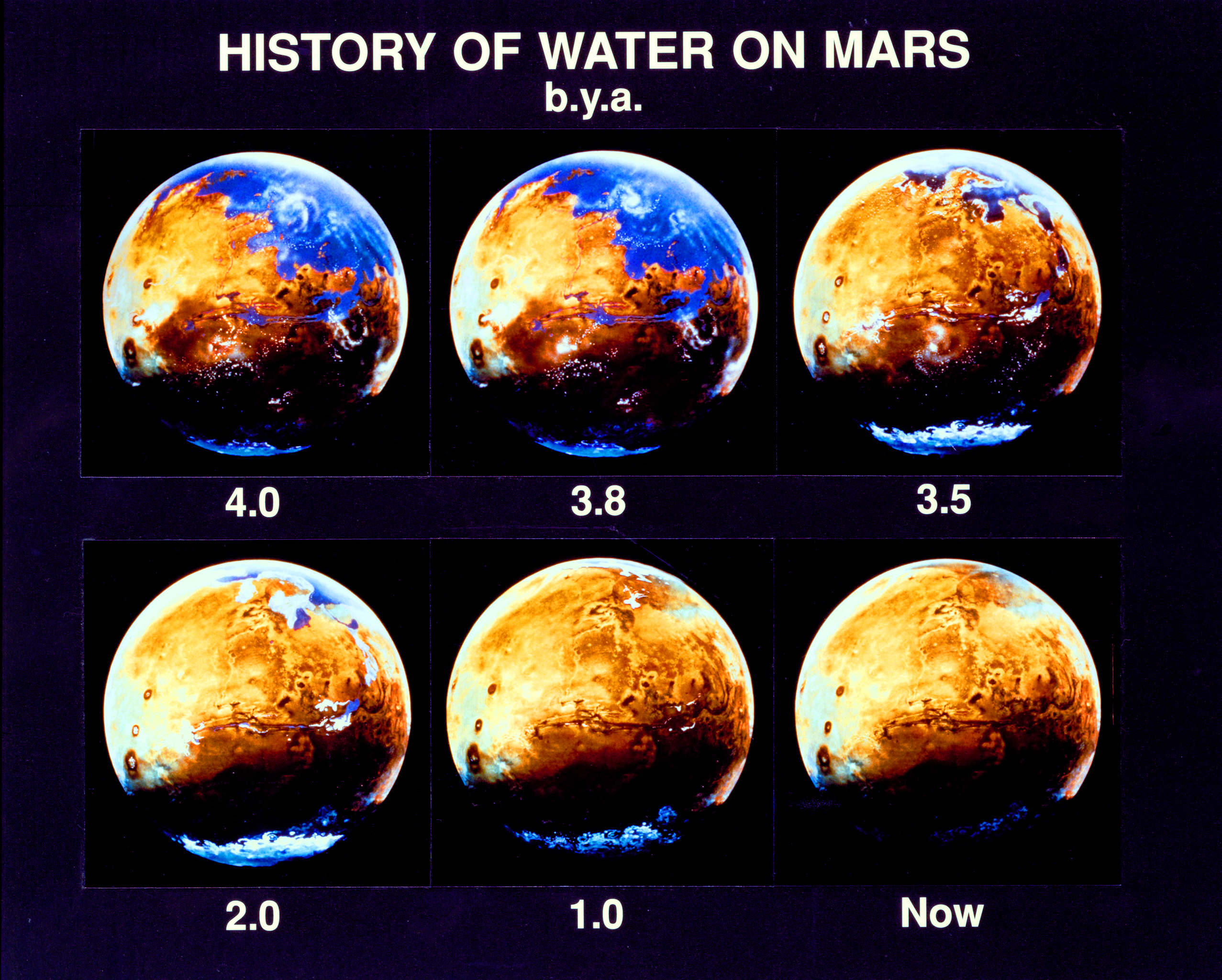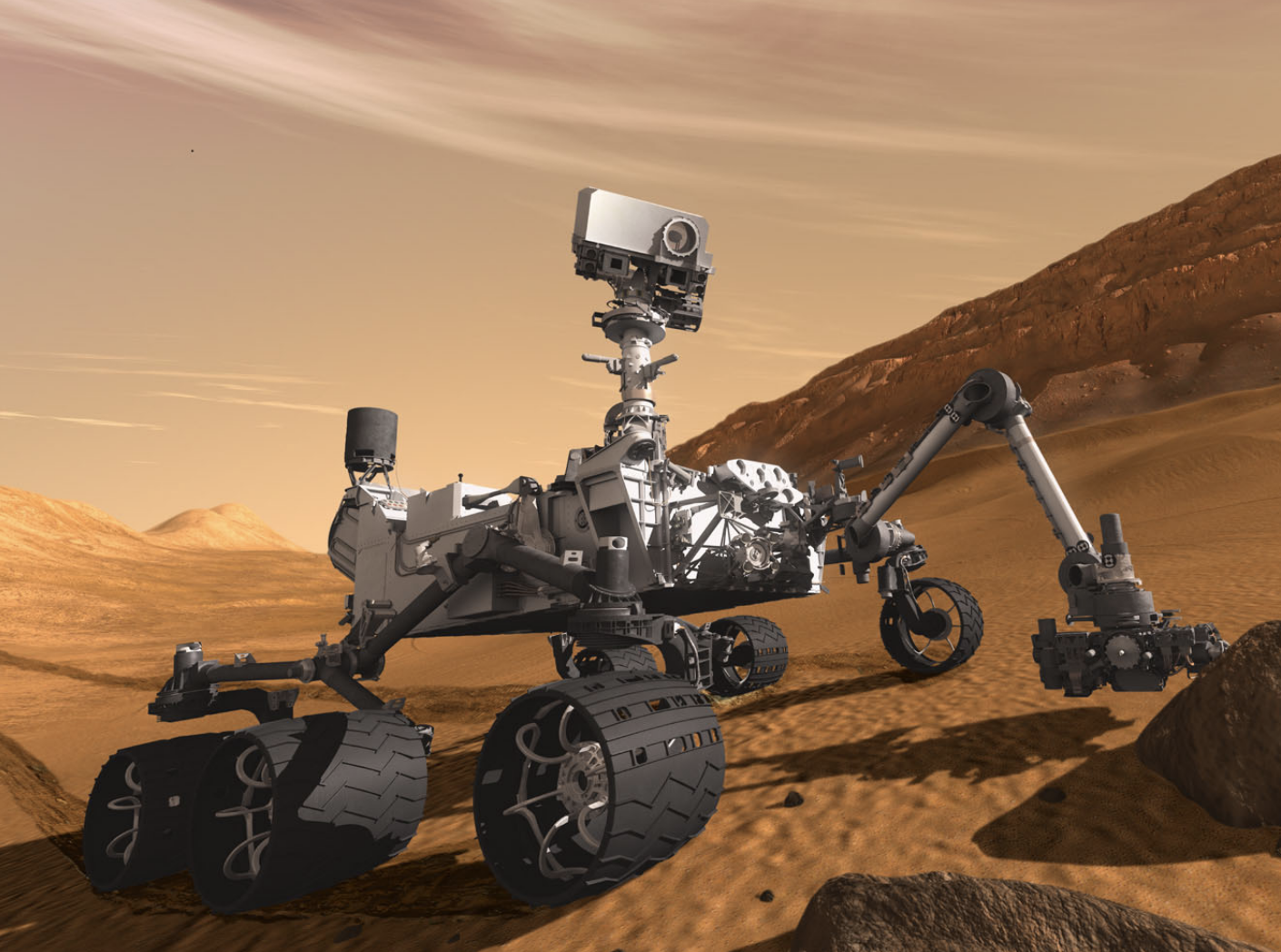Mars Science
I use satellite and rover data to answer broad questions on the geological, hydrological, and astrobiological history of Mars
Noachian Basement and Mars Remote Sensing

I used a variety of Mars satellite instruments - including CRISM, HiRISE, THEMIS, and MOLA - to characterize an ancient (>3.9 Ga) piece of Martian crust. With these instruments, Mars scientists can learn about the mineralogical composition and surface structure of the Martian crust. Through this work, I defined new geological units and features that furthered our understanding of giant impacs and the diverse igneous and water-containing environments in Mars' early history.
Modelling the Loss of Water through Mars' Geological History

I worked on modelling the evolution of different water reservoirs on Mars. Throughout geological history, Mars had liquid surface water causing formation of water-bearing minerals. Following, it has been hypothesized that much of this water escaped through the upper atmosphere. I use hydrogen isotope measurements of meteorites, MSL rover sample measurements, and the atmosphere to constrain the sizes of past water reservoir, the amount of water lost to different sinks, and the evolution of hydrogen isotopes through Mars' geological history. We found that the crust was a major reason why Mars lost its water very early on in its history.
Analyzing Olivine Chemistry with CheMin

During the summer of 2015, I briefly worked on understanding how to deconvolve the chemical composition of olivines using CheMin (an X-ray diffractometer on the Curiosity rover) with Prof. Edward Stolper. Through experiments, we found a correlation between the quantified width of X-ray diffraction peaks and the range in olivine compositions. This width-based X-ray diffractoin technique is likely to be able to further our understanding of Mars sample chemistry and the igneous evolution of Mars.